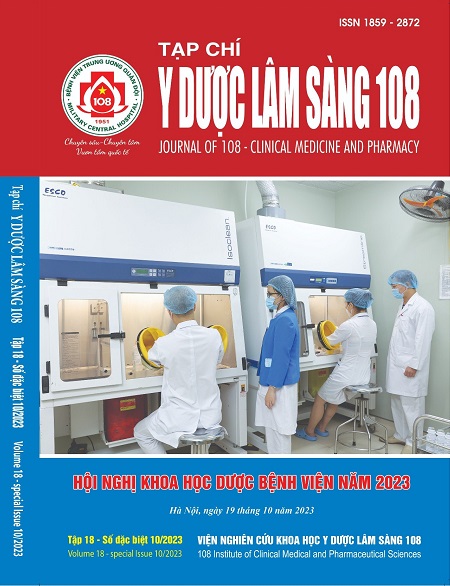Assessment of antibotic prophylaxis for cesarian section at Department of Obstetrics and Gynecology, Thong Nhat General Hospital, Dong Nai
Main Article Content
Keywords
Abstract
Objective: To investigate the characteristics of antibiotic prophylaxis and evaluate the appropriateness of drug prescribing. Subject and method: A descriptive, cross-sectional study was conducted on the medical records of 304 Cesarean section patients prescribed preoperative antibiotic prophylaxis, with discharge time during October 1, 2021 and December 31, 2021. Criteria for the critical use of antibiotic prophylaxis were based on Guidelines for using antibiotics of the Ministry of Health, 2015. Result: Among 304 patients with Cesarean section, 91.1% were given a dose of 1 g of cefazolin as a prophylactic antibiotic. Rate of surgical site infection after Cesarean section at hospital was 3.6%. The number of records with prophylactic antibiotics considered appropriate in accordance to the guidelines accounted for 80.9%. Premature or preterm rupture of membranes (OR = 2.7, CI95% = 1.4-5.2), and the anesthetic method (OR = 5.3, CI95% = 2.0-13.8) were statistically significantly associated with inappropriateness of antibiotic prophylaxis use. There were significant associations between appropriate use of prophylactic antibiotics and higher rate of wound infection at the hospital and the total treatment cost. Conclusion: Prophylactic antibiotic was prescribed appropriately in accordance to guidelines with relatively high percentage, however drug use in patients with preterm rupture of membranes and using of anesthetic method should be optimized.
Article Details
References
2. Bộ Y tế (2015) Quyết định 708/QĐ - BYT ngày 02/03/2015. Hướng dẫn sử dụng kháng sinh: 1-275.
3. Huỳnh Thị Ngọc Hạnh, Trần Thị Ngọc Vân, Hoàng Thy Nhạc Vũ (2017) Nghiên cứu việc sử dụng kháng sinh trong dự phòng mổ sanh tại bệnh viện Hùng Vương thành phố Hồ Chí Minh. Tạp chí Y Học Thực Hành, 1030(12/2016): tr. 99-102.
4. Kawakita T, Landy HJ (2017) Surgical site infections after cesarean delivery: Epidemiology, prevention and treatment. Maternal Health, Neonatology and Perinatology 3(1): 12. doi:10.1186/s40748-017-0051-3.
5. Bộ Y tế (2012) Quyết định số 3671/QĐ-BYT ngày 27/09/2012. Hướng dẫn phòng ngừa nhiễm khuẩn vết mổ: 1-21.
6. Conroy K, Koenig AF, Yu YH, Courtney A, Lee HJ, Norwitz ER (2012) Infectious morbidity after cesarean delivery: 10 strategies to reduce risk. Reviews in obstetrics & gynecology. 5(2):69-77.
7. Lê Thị Hồng Vân, Nguyễn Thị Minh Tâm, Huỳnh Thanh Tú (2018) Khảo sát kết quả sử dụng kháng sinh dự phòng trong mổ lấy thai tại khoa Phụ Sản, Bệnh viện Quân y 103. Tạp chí Y - Dược học quân sự 6, tr. 101-105.
 ISSN: 1859 - 2872
ISSN: 1859 - 2872
